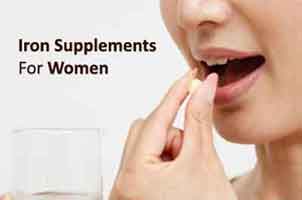- Home
- Editorial
- News
- Practice Guidelines
- Anesthesiology Guidelines
- Cancer Guidelines
- Cardiac Sciences Guidelines
- Critical Care Guidelines
- Dentistry Guidelines
- Dermatology Guidelines
- Diabetes and Endo Guidelines
- Diagnostics Guidelines
- ENT Guidelines
- Featured Practice Guidelines
- Gastroenterology Guidelines
- Geriatrics Guidelines
- Medicine Guidelines
- Nephrology Guidelines
- Neurosciences Guidelines
- Obs and Gynae Guidelines
- Ophthalmology Guidelines
- Orthopaedics Guidelines
- Paediatrics Guidelines
- Psychiatry Guidelines
- Pulmonology Guidelines
- Radiology Guidelines
- Surgery Guidelines
- Urology Guidelines
Alternate day Iron supplements linked to better results in Iron-Deficiency Anaemia

Alternate day dosage of iron supplements instead of daily is associated with increased iron absorption in women with low iron levels, suggests a small study in Lancet Haematology.
Current guidelines to treat iron deficiency recommend daily provision of ferrous iron divided through the day to increase absorption. However, daily dosing and split dosing might increase serum hepcidin and decrease iron absorption from subsequent doses.
In two open-label, randomised controlled trials Nicole U Stoffel et al. compared iron absorption from oral iron supplements given on consecutive versus alternate days and given as single morning doses versus twice-daily split dosing.
In the trial, about 40 women with depleted iron stores (serum ferritin 25 µg/L or less) but not moderate or severe anemia was assigned to receive iron (60 mg FeSO4) either on consecutive days for 2 weeks or alternate days for 4 weeks. Two weeks after treatment, the alternate-day group had higher fractional iron absorption (22% vs. 16% in the consecutive-day group) and total iron absorption (175 vs. 131 mg).
In study 2, women were assigned to two groups, stratified by serum ferritin so that two groups with similar iron statuses could be formed. One group was given 120 mg iron at 0800 h (±1 h) and the other was given the dose split into two divided doses of 60 mg at 0800 h (±1 h) and 1700 h (±1 h) for three consecutive days. 14 days after the final dose, the groups were each crossed over to the other regimen. In this case, absorption levels didn't differ between regimens, leading the authors to say that dividing doses "in an attempt to increase iron absorption is unnecessary."
It was found that during the first 14 days of supplementation in both groups, serum hepcidin was higher in the consecutive-day group than the alternate-day group (p=0·0031). In study 2, 20 women were enrolled between Aug 13 and 18, 2015. Ten women were assigned to receive once-daily dosing and ten were assigned to receive twice-daily divided dosing. No significant differences were seen in fractional (day 1–3 geometric mean: 11·8% [7·1, 19·4] once daily vs 13·1% [8·2, 20·7] twice daily; p=0·33) or total iron absorption (day 1–3: 44·3 mg [29·4, 66·7] once daily vs 49·4 [35·2, 69·4] twice daily; p=0·33) between the two dosing regimens. Twice-daily divided doses resulted in a higher serum hepcidin concentration than once-daily dosing (p=0·013).
It was concluded that in iron-depleted women, providin iron supplements daily as divided doses increases serum hepcidin and reduces iron absorption. Providing iron supplements on alternate days and in single doses optimises iron absorption and might be a preferable dosing regimen. These findings should be confirmed in iron-deficient anaemic patients.

Disclaimer: This site is primarily intended for healthcare professionals. Any content/information on this website does not replace the advice of medical and/or health professionals and should not be construed as medical/diagnostic advice/endorsement or prescription. Use of this site is subject to our terms of use, privacy policy, advertisement policy. © 2020 Minerva Medical Treatment Pvt Ltd